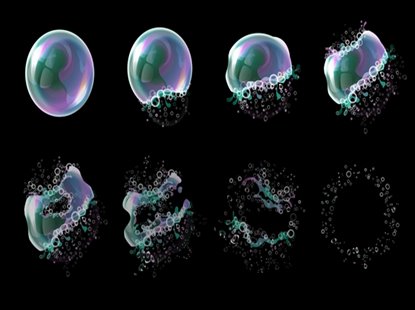Defoamers: Key Solutions for Managing Foam in Various Processes
Discover the Leading Benefits of Utilizing Defoamers in Industrial Processes
The use of defoamers in industrial processes presents a variety of engaging advantages that can improve functional effectiveness and product quality. By efficiently controlling foam production, these representatives not only maximize material circulation but additionally contribute to considerable price reductions and improved sustainability. The implications of taking on defoamers might be more profound than originally viewed.
Improved Process Efficiency
Optimizing industrial procedures usually includes resolving lathering problems, which can hinder functional effectiveness. Foam formation can interfere with the proper functioning of equipment, lower the efficient usage of sources, and complicate the surveillance of crucial criteria. By executing defoamers, sectors can efficiently minimize these concerns, causing structured operations and enhanced performance.
Defoamers job by destabilizing the foam framework, permitting for quick collapse and considerable reduction in foam quantity. This action not just enhances the circulation of products through devices, such as reactors, mixers, and pipelines, but likewise lessens disturbances caused by foam overflow. Consequently, devices downtime is reduced, enabling an extra reliable and continuous manufacturing procedure.
Furthermore, making use of defoamers can cause reduced energy usage. With much less foam to manage, compressors and pumps can run extra successfully, resulting in reduced operational expenses and an overall renovation in procedure throughput. Ultimately, the critical use of defoamers not just addresses immediate frothing challenges however likewise adds to a much more reliable industrial community, fostering a competitive benefit in a demanding market.
Improved Product High Quality
The integration of defoamers in commercial processes plays an essential role in boosting product top quality. By properly managing foam development, defoamers add to the uniformity and harmony of end products. Excessive foam can result in oygenation, which adversely influences the structure and security of formulations, particularly in markets such as food and drinks, coverings, and pharmaceuticals.

Furthermore, defoamers help with much better blending and dispersion of ingredients, causing homogeneity in formulas. This is necessary in applications where exact ingredient ratios are vital for performance and security. Additionally, the removal of foam can decrease the danger of contamination throughout manufacturing, additional safeguarding product honesty.
Inevitably, by enhancing item high quality, defoamers not only enhance customer fulfillment yet additionally enhance brand track record. Their duty in preserving high-quality requirements emphasizes their significance in contemporary commercial procedures.
Cost Decrease Advantages
Implementing defoamers in commercial procedures can lead to substantial price decrease advantages. By successfully regulating foam formation, defoamers lessen product loss throughout production, thus optimizing product usage. This reduction in waste translates straight into lower resources expenses, improving general operational effectiveness.
Furthermore, using defoamers can lower power intake. Too much foam can impede equipment performance, bring about enhanced energy needs to keep manufacturing levels. By reducing foam, defoamers assist in smoother operations, enabling equipment to run more effectively and reducing power expenditures.

In addition, defoamers can shorten handling times. By using defoamers, sectors can simplify their processes, leading to faster turn-around times and boosted throughput.

Environmental Influence Reduction
In commercial processes, using defoamers plays an essential function in mitigating environmental influences associated with foam generation. Foam can bring about substantial operational inadequacies, leading to boosted emissions and waste generation. By properly regulating foam, defoamers help maintain process performance, thereby decreasing the total ecological impact site web of operations.
Moreover, excessive foam can overflow control systems, bring about spills that might pollute dirt and water sources. Defoamers help reduce this threat by making certain that frothing does not go beyond prescribed restrictions, promoting compliance with environmental guidelines. This proactive approach not only safeguards communities yet likewise boosts the sustainability of industrial practices.
In addition, making use of defoamers can decrease energy intake in different processes. defoamers. Decreasing foam formation decreases the demand for added energy-intensive actions, such as raised agitation or pumping, which may otherwise be needed to manage foam. Subsequently, the adoption of defoamers lines up with broader sustainability goals by Discover More promoting energy efficiency while reducing the carbon footprint of industrial tasks.
Eventually, integrating defoamers into commercial procedures is a strategic measure that supports environmental stewardship and responsible source monitoring.
Adaptability Throughout Industries
Throughout numerous industries, defoamers demonstrate remarkable adaptability, adapting to the specific requirements of diverse applications. In the food and beverage sector, for example, defoamers are critical to maintaining item top quality by avoiding foam development throughout handling, which can impact appearance and flavor. In a similar way, in the pharmaceutical industry, defoamers make certain the stability of solutions, boosting product effectiveness and consistency.
In the chemical production realm, defoamers assist in smoother operations by decreasing foam in reaction vessels, hence boosting yield and reducing downtime. The paper and pulp market counts on defoamers to enhance the performance of pulp handling and paper manufacturing, ensuring optimal item integrity. Additionally, in wastewater therapy facilities, defoamers play a crucial duty in controlling foam during aeration processes, causing enhanced therapy end results.
The adaptability of defoamers includes the oil and gas sector, where they aid in handling foam in exploration liquids and production processes. By tailoring formulations to satisfy particular sector requirements, defoamers act as important tools that improve functional effectiveness, product high quality, and overall procedure effectiveness across a wide range of markets. Their versatility underscores their value in contemporary industrial applications.
Verdict
In final thought, the usage of defoamers in commercial procedures offers numerous benefits, consisting of enhanced efficiency, boosted item top quality, significant price reductions, and positive ecological influences. The combination of defoamers represents a critical approach to dealing with obstacles associated with foam management in numerous manufacturing environments.
Eventually, the critical usage of defoamers not only addresses prompt lathering obstacles but also contributes to an extra efficient industrial ecological community, cultivating an affordable benefit in a demanding market.
In industrial procedures, the usage of defoamers plays an important function in mitigating environmental influences associated with foam generation. By properly managing foam, defoamers assist preserve process effectiveness, therefore lowering the overall find more information ecological footprint of operations.
In addition, in wastewater therapy centers, defoamers play an important role in managing foam during oygenation processes, leading to enhanced therapy results.
